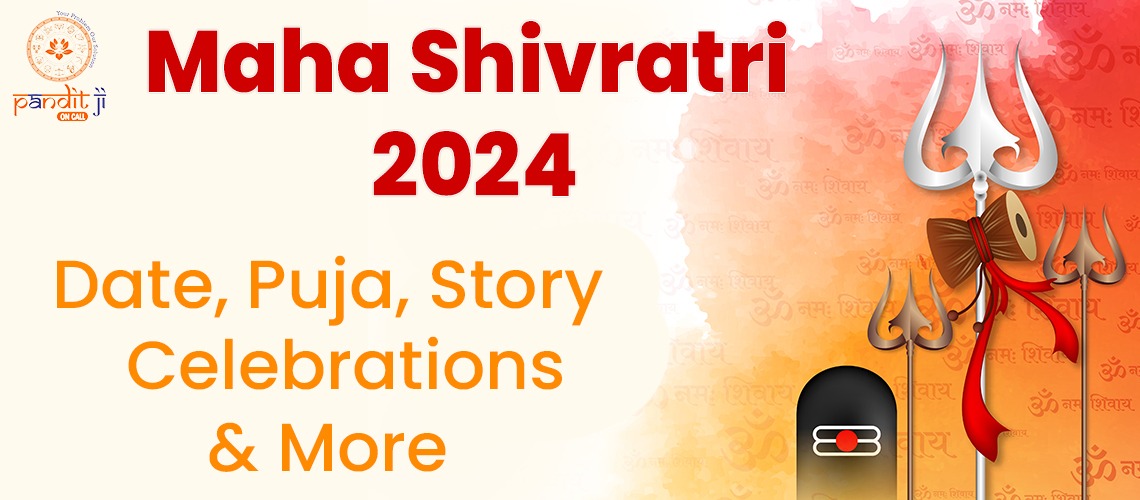
Maha Shivaratri, one of the most significant and revered festivals in Hinduism, is a celebration of Lord Shiva, the Supreme Being, the destroyer, and the embodiment of cosmic consciousness. In 2024, devotees around the world will observe Maha Shivaratri with profound reverence, engaging in prayers, rituals, and spiritual practices to connect with the divine essence of Lord Shiva. This blog aims to explore the spiritual significance, customs, and cultural richness associated with Maha Shivaratri.
Maha Shivaratri, translating to "The Great Night of Shiva," is observed on the 14th night of the dark fortnight in the Hindu month of Phalguna, which usually falls in February or March. The festival holds immense spiritual significance and is deeply rooted in Hindu mythology.
According to Hindu scriptures, Maha Shivaratri commemorates the night when Lord Shiva performed the cosmic dance, known as the Tandava, symbolizing the cycle of creation, preservation, and destruction. Devotees believe that on this auspicious night, Lord Shiva's divine energy is at its peak, and prayers offered with devotion can lead to spiritual awakening and liberation.
Maha Shivaratri Rituals and Customs:
Maha Shivaratri is observed with a range of rituals and customs that vary across regions and communities. Here are some common practices associated with the festival:
Also Read :वसन्त पञ्चमी 2024 त्यौहार, जानिए, तिथि महत्व और पूजाविधि
The Maha Shivratri Date: The Maha Shivratri in 2024 is on the 04th of March.
The Symbolism of Lord Shiva:
Lord Shiva, often referred to as the "Destroyer" in the Holy Trinity of Brahma, Vishnu, and Shiva, is a complex and multifaceted deity. Symbolically, Shiva represents the eternal, formless, and transcendental aspect of the divine. His attributes, such as the third eye, the crescent moon, the snake, and the Trishul (trident), convey deep spiritual meanings.
The Maha Mrityunjaya Mantra:
At the heart of Maha Shivaratri celebrations is the chanting of the Maha Mrityunjaya Mantra, a powerful hymn dedicated to Lord Shiva. This mantra is a prayer for liberation from the cycle of birth and death and invokes the healing and rejuvenating aspects of Shiva. Devotees believe that the continuous repetition of this mantra during Maha Shivaratri brings spiritual protection and inner strength.
Spiritual Significance of Maha Shivaratri:
Maha Shivaratri holds profound spiritual significance, providing devotees with an opportunity for self-reflection, inner purification, and communion with the divine. The festival serves as a reminder of the impermanence of life, the cyclical nature of existence, and the ultimate reality beyond the material world.
Celebrations Across India:
Maha Shivaratri is celebrated with great fervor across India, and each region adds its cultural touch to the festivities. In Varanasi, the holiest city for Hindus, devotees throng the Kashi Vishwanath Temple to offer prayers to Lord Shiva. In the southern state of Tamil Nadu, the annual Ananda Thandavam festival is celebrated with processions and cultural events.
The state of Gujarat sees the Maha Shivaratri fair in the town of Junagadh, drawing pilgrims and tourists alike. In the Himalayan region, especially in Uttarakhand and Himachal Pradesh, devotees undertake pilgrimages to sacred shrines dedicated to Lord Shiva.
Maha Shivaratri 2024 is a sacred occasion for Hindus worldwide to immerse themselves in the divine energy of Lord Shiva. The festival goes beyond mere rituals; it is a journey within, a celebration of the eternal essence, and an opportunity for spiritual awakening.
As devotees fast, chant mantras, and engage in prayer, they seek to experience the transformative power of Lord Shiva's grace. Maha Shivaratri is a reminder that, like the cosmic dance of Shiva, life is a rhythmic interplay of creation, preservation, and dissolution.
May Maha Shivaratri 2024 be a time of inner illumination, spiritual growth, and a deep connection with the divine for all those who celebrate this auspicious festival. Om Namah Shivaya!
Connect with an Astrologer for more personalised detailed predictions. First FREE CALL.